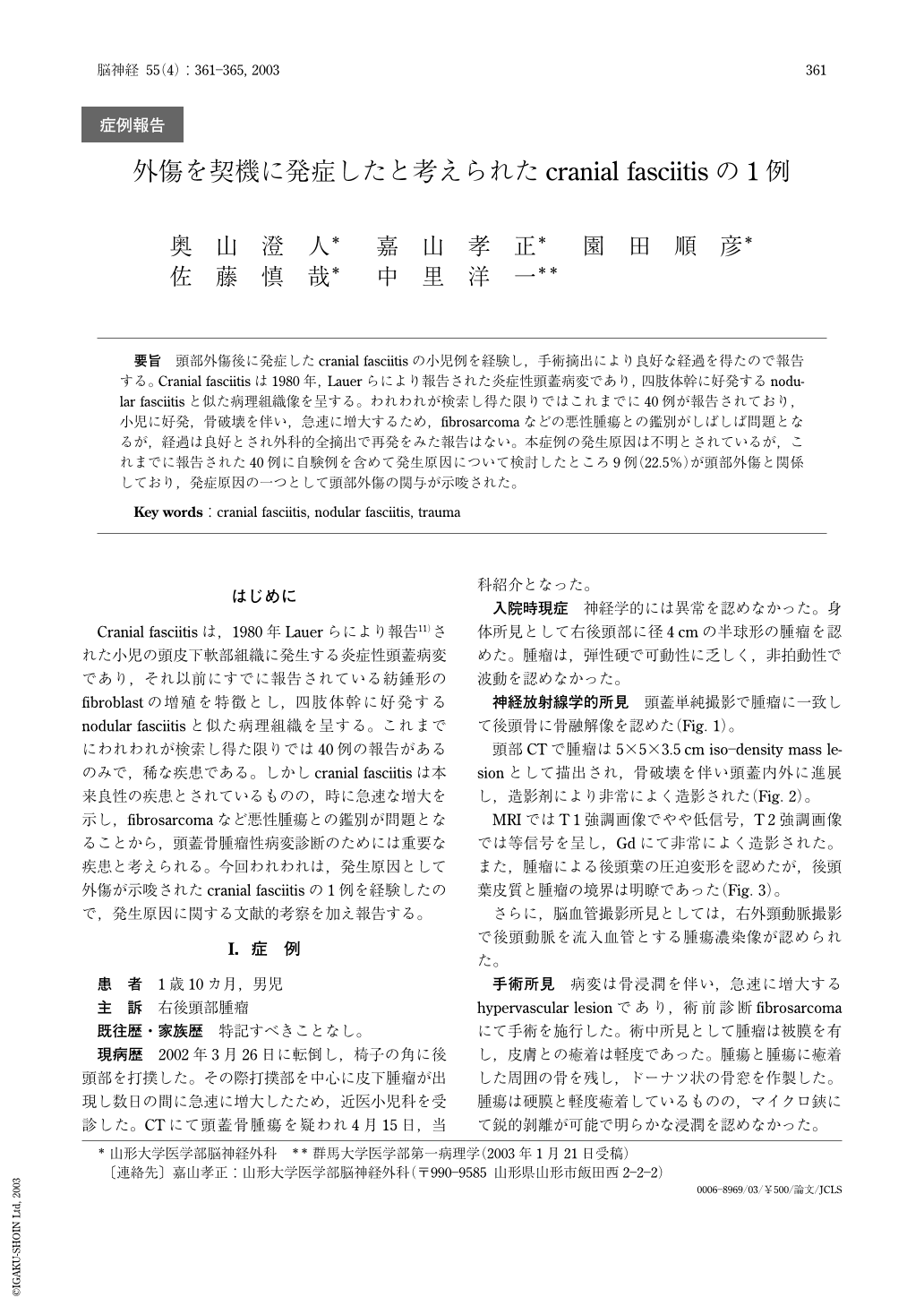Japanese
English
- 有料閲覧
- Abstract 文献概要
- 1ページ目 Look Inside
要旨 頭部外傷後に発症したcranial fasciitisの小児例を経験し,手術摘出により良好な経過を得たので報告する。Cranial fasciitisは1980年,Lauerらにより報告された炎症性頭蓋病変であり,四肢体幹に好発するnodular fasciitisと似た病理組織像を呈する。われわれが検索し得た限りではこれまでに40例が報告されており,小児に好発,骨破壊を伴い,急速に増大するため,fibrosarcomaなどの悪性腫瘍との鑑別がしばしば問題となるが,経過は良好とされ外科的全摘出で再発をみた報告はない。本症例の発生原因は不明とされているが,これまでに報告された40例に自験例を含めて発生原因について検討したところ9例(22.5%)が頭部外傷と関係しており,発症原因の一つとして頭部外傷の関与が示唆された。
We present a 20-month-old boy with a rapid growing occipital mass after head trauma, that was pathologically diagnosed as cranial fasciitis. Cranial fasciitis, first described as a specific entity by Lauer and Enzinger in 1980, is a benign fibroblastic lesion occurring in children that resembles nodular fasciitis pathologically. Nodular fasciitis also shows benign proliferation of fibroblasts and myofibroblasts in the subcutaneous tissues. This disease was firstly reported in 1955. This lesion is arising in the upper and lower extremities and trunk in adult commonly. The rapid growth, abundant cellularity, and mitotic activity cause these lesions to be misdiagnosed as sarcomas frequently. However, these lesions recur rarely, do not develop metastases, and are readily cured only by surgical excision. Cranial fasciitis is similar to nodular fasciitis in clinical cause and pathology. Therefore cranial fasciitis should be considered a variant of nodular fasciitis, although it differs from noduler fasciitis in its frequent site and age. Cranial fasciitis occurs in skull bone and in childhood. The cause of them are still unknown. However, we speculate on the relationship between head trauma and cranial fasciitis making reference to the fact that 5~15% of nodular fasciitis were caused by trauma. So we investigated this relationship in cranial fasciitis, then 8 cases of 40 cases(20%), that we could trace in the world literatures, had histories of previous head trauma. From this result, head trauma is one of a cause of cranial fasciitis probably.

Copyright © 2003, Igaku-Shoin Ltd. All rights reserved.


